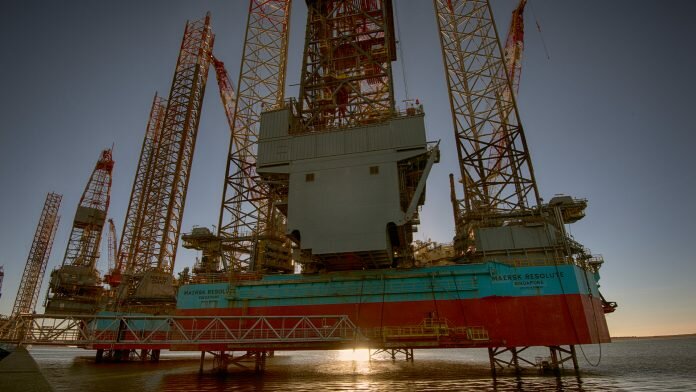
Danish oil rig operator Maersk Drilling has announced it will debut a hybrid oil drilling rig, prioritising energy efficiency and emissions reduction.
The project will see Maersk Intrepid, an existing rig operating off the coast of Norway on behalf of Norwegian energy provider Equinor, fitted with a series of upgrades which will convert it to run on hybrid power and produce fewer harmful greenhouse gas emissions; and is projected for completion by the end of 2019. The first upgrade, installing batteries to enable implementation of hybrid power on the rig, will be completed in July this year.
Maersk Drilling’s Chief Commercial and Innovation Officer, Morten Kelstrup, said: “The Maersk Intrepid project is the result of asking a simple yet challenging question: What would be the most efficient technological approach to minimising emissions from a rig in the short term? The resulting ideas have been very positively received by Equinor and will contribute to Equinor’s long term emission targets. It should be noted that the upgrades will not only produce a low emission profile for the rig; they will also result in cost savings for our customer due to lower energy consumption, so this is business and low emission targets working hand in hand…we observe a strong drive from both authorities and the industry on energy efficiency and emissions. With this combined solution, Maersk Intrepid will provide important data and learnings to build from.”
The hybrid oil drilling rig initiative will benefit from a funding distributed by Norway’s NOx Fund, which aims to reduce harmful nitrogen oxide emissions from Norwegian industry. As long as the project’s upgrades can be verified to cut emissions, it will receive a grant of up to 80 per cent of project costs.
Tommy Johnsen, General Manager of the NOx Fund, said: “The NOx Fund has requested these types of emission reduction projects for a long time, and finally they are being realised. Here Maersk Drilling takes the lead by showing that cost efficient measures to significantly reduce NOx can be combined with reduced CO2 emissions and improved fuel efficiency. Hopefully we will see more of these and similar solutions on board rigs going forward.”


















